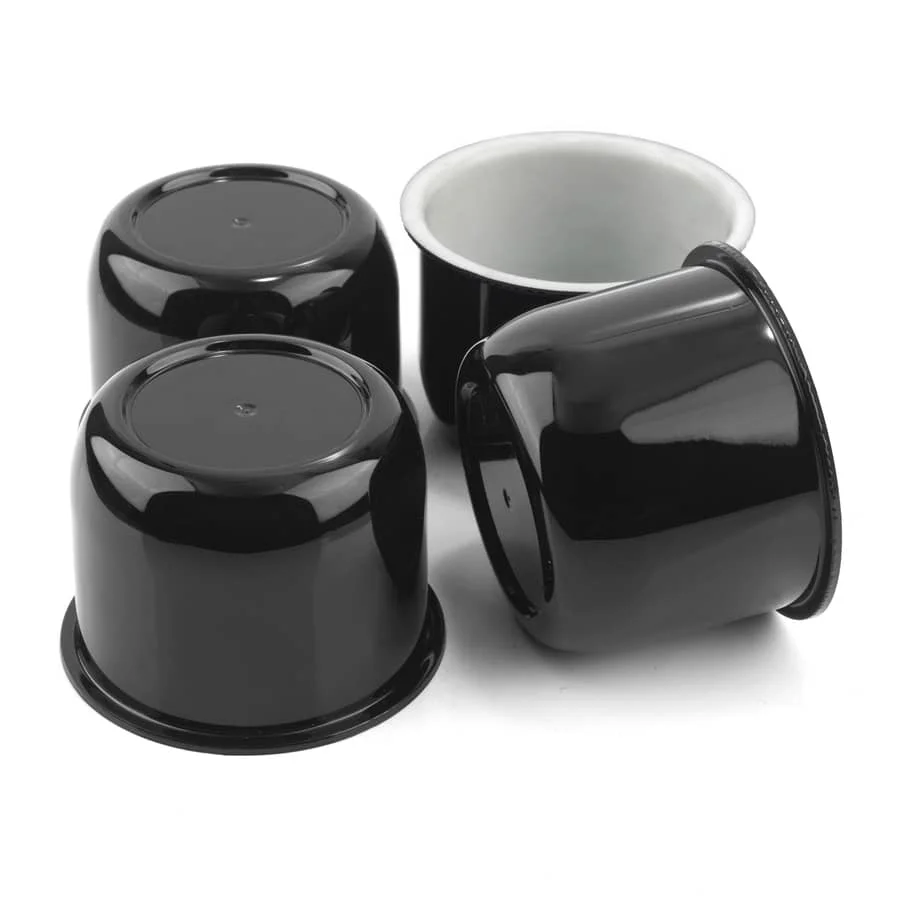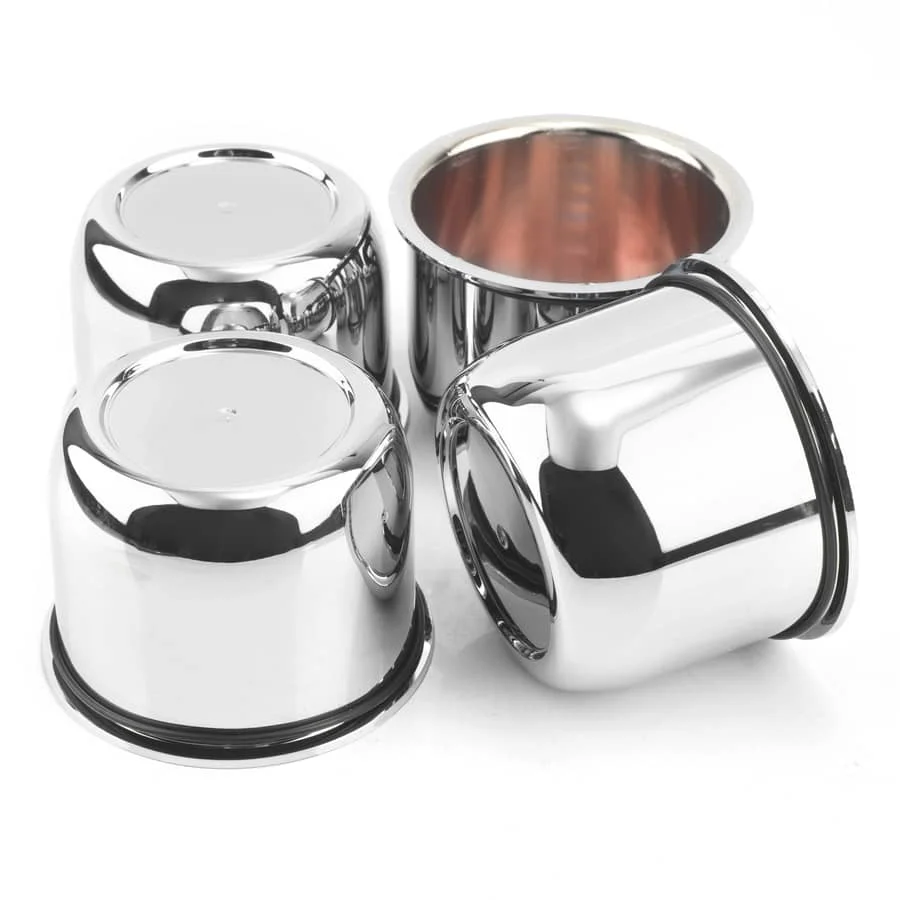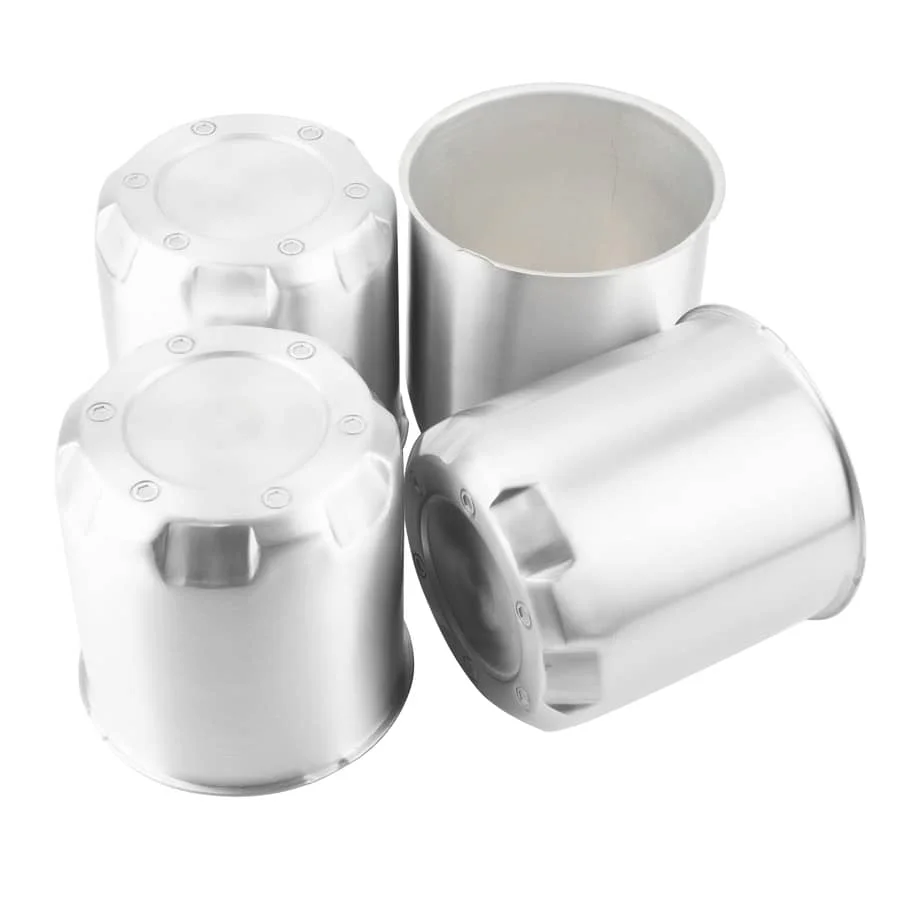As an important part of automobile appearance, hubcap affects the aesthetics of the whole vehicle and directly relates to its durability and performance. Therefore, choosing the right surface treatment is crucial to enhancing the quality of hubcaps. The following is a detailed introduction to hubcap surface treatment, including common treatment methods, their advantages and disadvantages, and applicable scenarios.
I. Paint Spraying
Painting is one of the most common methods of hubcap surface treatment. A wide range of colors and gloss levels can be achieved by evenly spraying environmentally friendly paint onto the hubcap surface. The advantage of spray painting is that it is colorful and can blend perfectly with the overall style of the car.
Trailer Wheel Center Caps for 3.03″ Truck RV SUV Hub Center Rims
- Advantages:
- Variety: A wide range of colors, textures, and gloss levels can be selected to meet the individual needs of different consumers.
- Relatively low cost: Compared to other treatment processes, spray paint is less expensive and suitable for mass production.
- Disadvantages:
- Poor abrasion resistance: Although spray painting can provide an aesthetic appearance, the coating is prone to wear and tear under high-intensity use.
- Insufficient chemical resistance: Sprayed surfaces have relatively weak resistance to chemicals and are susceptible to corrosion.
II. Plating
Electroplating is a treatment process in which a layer of metal is plated on the surface of the hubcap through an electrochemical reaction, usually using chrome or nickel. Plating not only provides a high-gloss appearance but also enhances the corrosion resistance of the hubcap.
Wheel Push Thru Center Caps Fit 3.03″ Trailer Rims Chrome
- Advantages:
- Aesthetics: The plating has an extremely high gloss and can add a luxurious look to the hubcap.
- Corrosion resistance: The metal layer effectively resists oxidation and corrosion, extending service life.
- Disadvantages:
- Higher cost: The plating process is relatively complex and costly, especially in small-batch production.
- Environmental impact: The plating process may produce pollutants and require strict compliance with environmental regulations.
III. Anodizing
Anodizing is mainly applied to aluminum alloy hubcaps. This process forms an oxide film on the aluminum surface through an electrochemical reaction, which enhances the hardness and wear resistance of the surface while providing good protection against corrosion.
Push Through Center Caps 8 Lug Wheels for 5.15″ Trailer Rims
- Advantages:
- Strong abrasion resistance: After anodizing, the surface hardness is significantly increased and the abrasion resistance is superior.
- Environmentally friendly: the process does not use harmful chemicals and meets environmental requirements.
- Disadvantages:
- Limited color choices: The color choices of anodic oxidation are relatively few, mainly in metallic colors.
- Higher cost: Compared to spraying, the process of anodizing is complex and relatively costly.
IV. Polishing
Polishing is a processing method that utilizes mechanical, chemical, or electrochemical action to reduce the surface roughness of a workpiece to obtain a bright, flat surface. Polishing does not improve the dimensional or geometrical accuracy of the workpiece, but rather aims at obtaining a smooth surface or a mirror-like luster, and is sometimes used to eliminate luster. Polishing is usually used as a polishing wheel as a tool, the polishing wheel is made of multi-layer canvas, felt, or leather, clamped on both sides with a metal plate, and the rim of the wheel is coated with a uniform mixture of micro-powder abrasives and grease from the polishing agent. Polishing, high-speed rotation of the polishing wheel pressed against the workpiece, so that the abrasive on the surface of the workpiece produces rolling and micro-cutting, to obtain a bright machined surface, the surface roughness generally up to Ra0.63 ~ 0.01 microns.
Hubcaps are commonly polished in barrels.
Push Through Center Caps 8 Lug for Truck Trailer Rims 5.15″
Summary
There are various surface treatment processes for hubcaps, each with its advantages and disadvantages. Choosing the right surface treatment should take into account factors such as aesthetics, durability, cost, and the environment in which it is used. For consumers seeking both appearance and performance, understanding the characteristics of these treatments will help them make a more informed choice. Whether it’s painting, plating, or anodizing, the right finish can dramatically improve the overall quality of a hubcap, ensuring that the vehicle is both aesthetically pleasing and durable while on the road.





